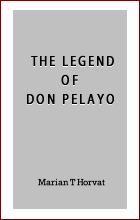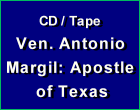Stories & Legends
 |
 |
 |
 |
 |
 |
 |
Our Lady Quells an Indian Uprising
On August 6, 1771, Fr. Junipero Serra sent out Fr. Pedro Cambon and Fr. Angel Somera, with a guard of 10 soldiers and the muleteers with the pack train of provisions from San Diego with order to found the new Mission San Gabriel Arcángel. They traveled in a northerly direction, following the route of the first Holy Expedition of 1769 led by Governor Portolá.

Mission San Gabriel with its Moorish capped buttresses, founded on September 8, 1771
When the group was deciding on the choice of a site, a numerous band of pagans, all armed and led by two chiefs, made its appearance. With blood-curdling war cries, they attempted to impede the mission’s founding.
The Fathers greatly feared that a battle was imminent that would surely result in the death of not a few. Then one them brought forth a canvas on which was painted the image of Our Lady of Sorrows and held it up in view of the barbarians. No sooner was this done than that fierce band were conquered by that beautiful image.

The Indians saw the image, threw down their weapons & offered her beads & trinkets
They also called together the Indians of the nearby villages; thus an ever-growing number of men, women and children came to see the Most Holy Virgin. They came bearing various seeds, which they placed at the feet of the Most Blessed Lady, thinking she would consume them as other humans did.
Something similar happened with the pagan women at the Mission of San Diego after its inhabitants had been pacified. The Indians were shown another image of the Virgin Mary, the statue of Our Lady of Bethlehem with the Infant Jesus in her arms that remained in the San Diego Mission one year until the founding of the Monterey Mission. The news spread to near-by villages and the natives flocked to see it.
Since they could not come into the enclosure, excluded by the stockade, they called the Fathers, and the women even stuck their breasts in between the posts of the enclosure safeguarding the life-size statue of Our Lady of Bethlehem, signifying in this vivid manner that they came to give milk to that tender and beautiful Child in possession of the Fathers.
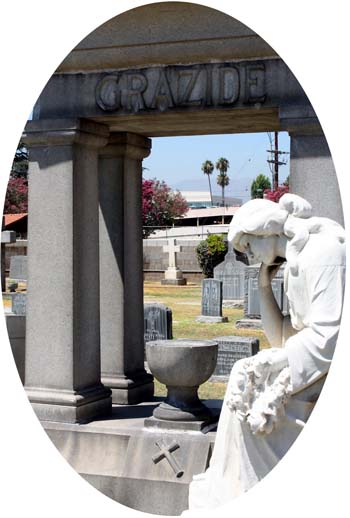
The San Gabriel Mission Cemetery, the first in California, is the final resting place for some 6,000 neophytes
The Fathers proceeded to explore the whole wide plain and began the Mission in the place which they considered most suitable, using the same ceremonies used in the founding of the other Missions.
The first Mass was celebrated under a little shelter made of branches on the feast of the Nativity of Our Lady, the 8th of September, 1771. On the next day work was begun on the Chapel which was to serve as a provisional Church, and also a house for the Fathers and another for the troops, all made of palings and surrounded by a stockade as a precaution against possible attacks.
The greater part of the wood for the constructions was cut down and dragged in by the Indians themselves, who also helped in the construction of the small houses. For this reason, the Fathers were encouraged to hope for a great success, and that the pagans would not delay in embracing the sweet yoke of the law of the Gospal.
Two years after the founding of the Mission, there were already 73 baptized, Palou goes on to report. And when the Ven. Father Serra died, the mission counted 1,019 neophytes.
Today the more than 300 year old painting hangs in front of and slightly to the left of the old High Altar and reredos in the Mission's Sanctuary.
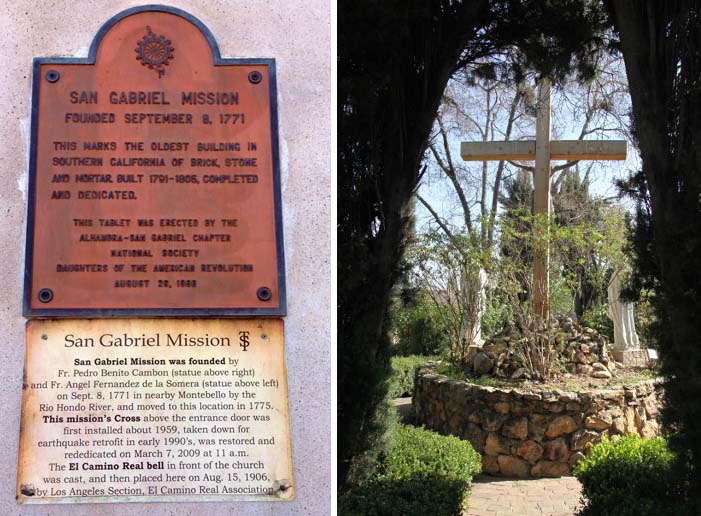
The cross & markers at the entry way of
Mission San Gabriel
The story above was taken from Fr. Palou’s biography of Fr. Serra. Fray Junipero Serra himself mentions the painting that was placed in the Mission and was a favorite of the locals, especially the women who would visit her daily and bring gifts. The last account was by Pedro Fages, the first Lieutenant Governor of the “Californias” who was not cooperative with the Franciscan missionaries. His account records his annoyance at the number of natives who would bring gifts to Mater Dolorosa and seek her out daily.
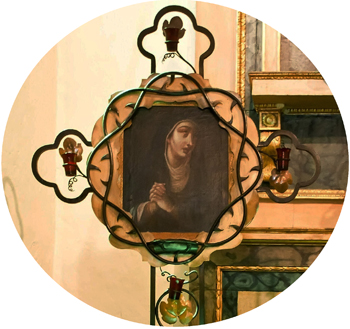
Our Lady of Sorrows, framed in wrought iron,
can be seen in the Mission Sanctuary

Excerpt from Francisco Palou’s
Life and Apostolic Labors of the Venerable FatherJunípero Serra
Trans. Maynard J. Geiger, Washington D.C., 1955
Posted June 8, 2024
Life and Apostolic Labors of the Venerable FatherJunípero Serra
Trans. Maynard J. Geiger, Washington D.C., 1955
Posted June 8, 2024





